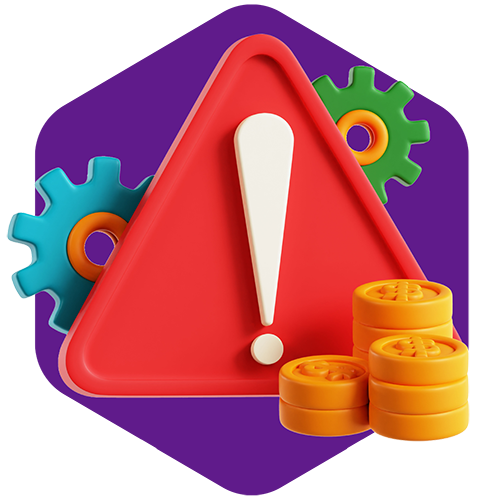Successful trading on financial markets is not just about finding opportunities and selecting the right assets (stocks). Equally important, if not even more crucial, is risk management and optimal capital allocation. Traders who underestimate the importance of risk and money management often face unexpected losses that can significantly impact their long-term or overall success. In this article, we explain why risk management is essential, how to effectively set position size, stop-loss and take-profit, and how diversification can help protect your capital.
Why is risk management important in trading?
Markets are dynamic and unpredictable. Even the best market analysis cannot guarantee that the price will move as expected. Risk management is therefore key to maintaining long-term stability – it helps you with the following:
Capital protection 🛡️
Your trading balance depends on the available capital—if you lose it, you logically won’t be able to continue trading; risk management cleverly helps minimize losses.
Emotional stability ⚖️
When you know you have risk under control, it's easier to resist panic or impulsive decisions; lower stress leads to calmer trading – more in our recent article about emotions in trading.
Long-term growth 📈
The goal is ideally not a one-time gain, but stable growth of the trading account over time; without a responsible approach to risk, any current partial success can quickly turn into a downfall.
Proper position size, stop-loss and take-profit
Let’s go through a few important terms that will help you easily improve risk management in trading.
-
Position size – It should match the level of risk you are willing to take. Generally, it is recommended not to risk more than 1–2% of your capital per trade. Properly set position size depends on these factors:
- Asset volatility: More volatile assets mean greater potential movement, and thus require smaller position sizes to maintain the same risk.
- Stop-loss distance: The farther the stop-loss is from the entry price, the smaller the position size should be to avoid exceeding risk limits.
-
Stop-loss – This is a predetermined price at which you close the position with a loss if the market moves against your expectations. Setting it protects your account from bigger losses and prevents emotional decisions.
- Technical levels: Stop-losses are often placed below support, above resistance or based on key technical levels.
- Market volatility: If the market is highly volatile, it may be appropriate to set a wider stop-loss and reduce the position size to maintain constant risk.
-
Take-profit – This is the price level at which you plan to close the position with a profit, helping you secure gains and avoid holding positions too long in hope of a higher profit (which may not come).
- Risk-to-reward ratio: When setting take-profit, consider the risk-to-reward ratio. For example, if risking 10 USD, aim for at least 20+ USD in potential gain.
- Technical analysis and fundamentals: Use technical and fundamental analysis to find a level where profit realization is likely.
Diversification and protection of invested capital
Diversification means allocating investments across various assets, sectors, and geographical regions. Its main goal is to reduce overall portfolio risk, as a decline in one investment may be offset by a rise in another. How to do it?
Summary of risk and money management
Risk and money management are not just some add-ons but are the foundation of successful trading. Setting the right position size, thoughtful use of stop-loss and take-profit orders, and portfolio diversification help you maintain control over risks and protect your capital. The result is more stable and sustainable growth of your trading account and greater peace of mind in daily market decisions.
Understanding the principles of risk management is one of the next steps to success on financial markets. In the 6th part of our Beginner's Guide to the Stock Market, you can look forward to the topic of Trading Strategies and Styles. And if you don’t want to wait or study more, there’s our XDIGR – just choose a slot (a prepared market trade) and deposit into it. Our experienced traders will take care of the rest as always.


